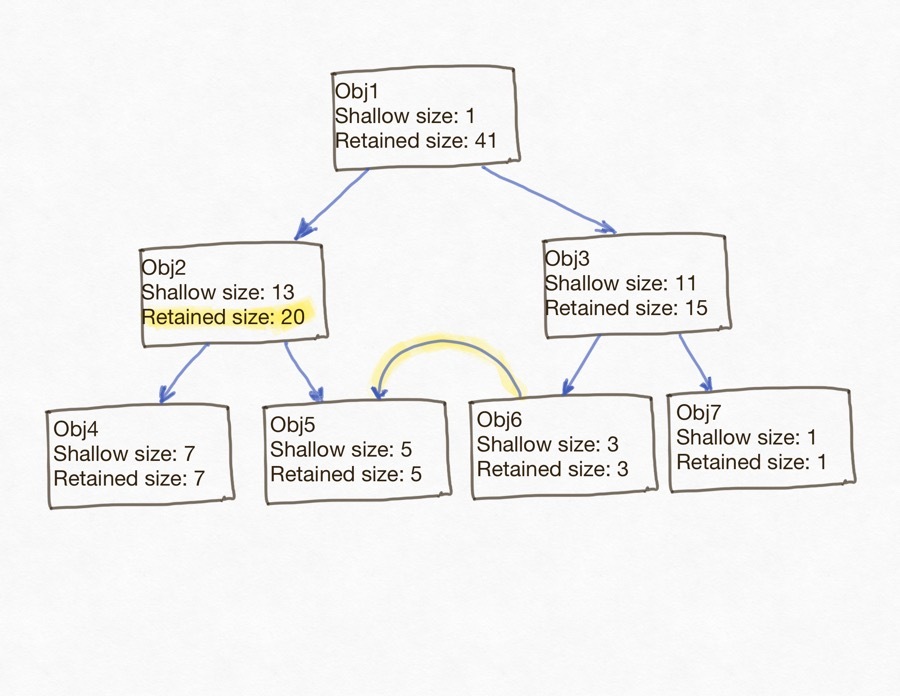理解VisualVM中的保留大小(Retained Size)
Shallow Size and Retained Size 的含义都是指的实例对象,不是类本身。
下面将用 sampleClass 表示类Sample的一个实例(instance)
Shallow Size 含义
Shallow Size 就是对象本身所占用的大小,不包括其引用的对象。
举个例子:
public class SampleClass{
// age 属于 Shallow Size
private int age = 1;
// String 类型引用本身 name 属于 Shallow Size,
// 被引用对象 "SOME_STRING" 不属于 Sample 的实例Shallow Size
private String name = SOME_STRING;
// 数组所有内容都属于 Shallow Size
private int[] ids = {1, 2, 3};
}
Retained Size 含义
针对可达对象
可达对象就是说,从 GC roots 开始搜索,能够到达的对象,也就是说下一次GC不会被清理的对象,采用下面的计算方法来得到 Retained Size 对象
Retained Size的含义相对于Shallow Size 不太好理解。依然是上面的例子,在不同的情况下,sampleClass 的Retained Size 并不相同。下面引用StackOverFlow上的一个 回答 来解释这个问题。
Retained sizeof an object is its shallow size plus the shallow sizes of the objects that are accessible, directly or indirectly, only from this object. In other words, the retained size represents the amount of memory that will be freed by the garbage collector when this object is collected.

上图应该比较容易理解,看起来每个对象的Retained Size 都符合公式( Retained Size = Shallow Size + 直接子对象的 Retained Size),并没有什么问题,然后我们看另外一种引用关系中,Obj1 的Retained Size 就会发生变化。

第二种图中,你会发现Obj2的Retained Size 不再符合我们刚刚总结出来的公式,这是因为Obj2的直接子对象Obj5还被Obj6所引用,造成的结果就是,如果Obj2被回收,Obj5并不会被回收,所以 Obj2 的Retained Size就不应该包括 Obj5 的Retained Size. 虽然 Obj2 的 Retained Size 发生了变化,但是 Obj1 的 Retained Size 并没有发生变化。
针对不可达对象
指的是下一次 GC 会被清理的对象,也就是说没有其他对象引用自己的对象。
如果你尝试使用 VisualVM 分析dump文件的时候,你会发现有些对象的 Retained Size 居然是0,这个0就推翻了上面那种分析方法的的结论,觉得无论什么样的对象肯定是会有 Shallow Size 的,不可能为0。
通过分析最后可以这样理解:针对不可达对象,也就是可以完全被清除的对象,Retained Size 都是0










![[HBLOG]公众号](https://www.liuhaihua.cn/img/qrcode_gzh.jpg)

